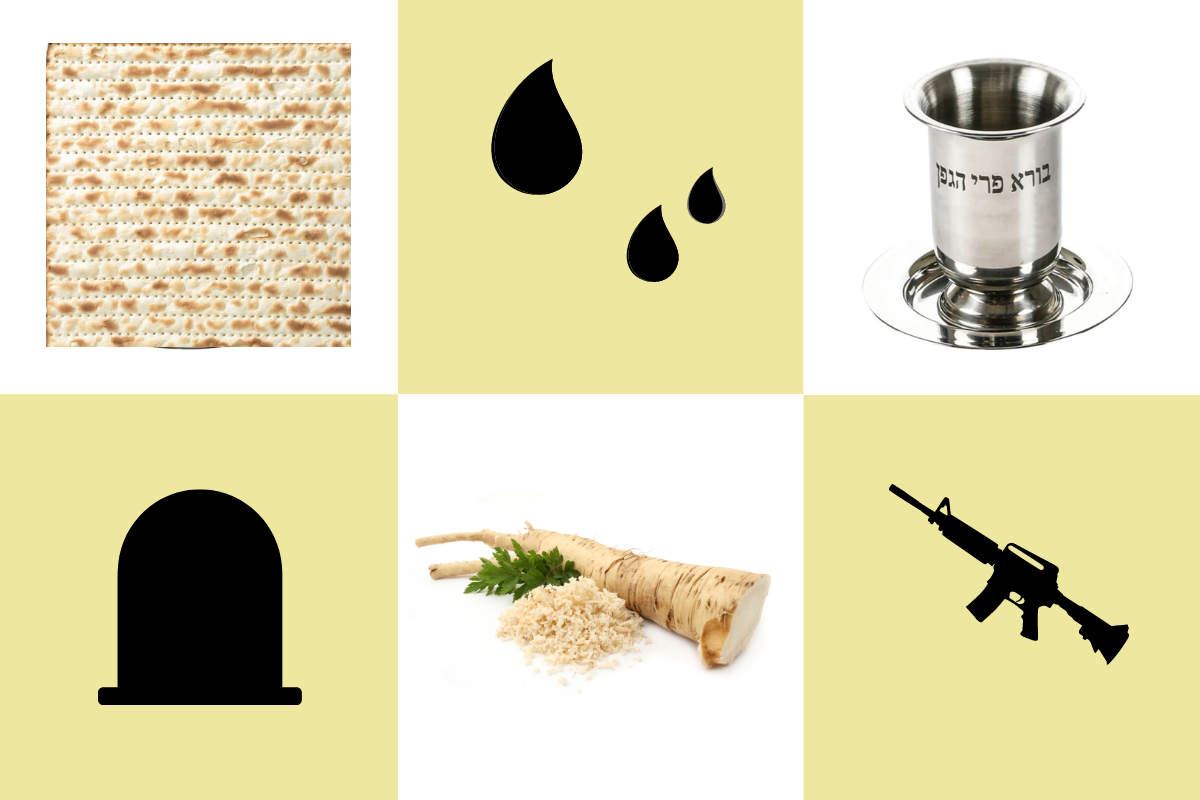Published: 30 May 2023
Last updated: 5 March 2024
STEVE MEACHAM previews a flagship Jewish Museum exhibition, which includes a contemporary companion exhibition by Yvette Coppersmith.
Most people associate the great Jewish artist Marc Chagall with his paintings, laden with folkloric and Biblical references.
But a new exhibition at Melbourne’s Jewish Museum of Australia explores other aspects of Chagall’s extraordinarily varied range of cultural talents: poetry, printmaking, stained glass windows and the massive 12 panel ceiling canvases at the Paris Opera House he was commissioned to paint by André Malraux in 1960.
The new exhibition is “a symbolic nod” to the museum’s first large-scale show in 1995, directed by the late Dr Helen Light AM, which paid homage to Chagall.
It also features a contemporary response with a companion exhibition by an Archibald-Prize-winning Melbourne Jewish artist.
CHAGALL, the exhibition, has been curated by art historian Jade Niklai in collaboration with Anna Tregloan, the exhibition designer.
Clearly, the large-scale public works - the stained glass, the murals, the tapestries - can’t be removed from their permanent surroundings. They can be viewed in situ at many synagogues and churches around Europe, at the Knesset (the Israeli parliament), the United Nations building in Manhattan and Hadassah Hebrew University Abbel Synagogue in Jerusalem.
So how did the team manage to create a space that includes works it can’t put on the walls and tell the story of Chagall’s life “in a poignant and dramatic way”?
Niklai is reluctant to give away secrets of the show. She says works will be interpreted via light shows and other “activations which bring the artworks to life”.
Also expect to find examples of Chagall’s love of poetry: he once said he preferred the company of poets to the company of painters. Not only was Chagall a published poet, he also relished providing illustrations for other poets and authors, many of which are on display for the first time in Australia.
The exhibition will also celebrate “the centrality of Jewish heritage and identity in Chagall’s art and the richly experimental, luminous and joyful nature of his work”, according to the museum.
An extraordinary life

Russian-born Chagall is among the most important artists of the 20th Century - a giant alongside contemporaries such as Henri Matisse, Joan Miró and Pablo Picasso (with whom he had a friendship which dissolved into a vindictive no-speak quarrel after a dinner party).
Robert Hughes - the distinguished New York-based Australian art critic - called Chagall “the quintessential Jewish artist of the twentieth century”.
Even Picasso (after their stoush) said: “When (Matisse) dies, Chagall will be the only painter left who understands what colour really is.”
Chagall outlived Lenin, Stalin and Hitler, escaping Vitebsk (which he always considered home) for St Petersburg, Berlin, Paris, London and New York.
Bella - his first wife who he met in Vitebsk - died in 1944, presumptuously young, having travelled from Vitebsk to New York with him.
Her death seems to have been a watershed in Chagall’s career, and she frequently appeared in his paintings “as a recurring pictorial motif” according to the Encyclopaedia Britannica.
Though he continued painting, the final decades of his life were increasingly devoted to larger projects.
In 1945, for example, he was invited by Igor Stravinsky to design the sets and costumes for a New York production of the composer’s ballet The Firebird. Chagall’s costumes are still used today by the company.
Already aloft in the pantheon of 20th Century artists, Chagall developed new skills in the autumn of his life.
His mastery of stained glass - think of the windows he produced for Metz Cathedral in 1960 - is unparalleled among contemporary artists.
That same year, Chagall was commissioned by novelist Malraux - then the French minister of culture - to paint a new ceiling for the Paris Opera, referenced in the Melbourne show.
Despite his orthodox upbringing and strong association with Jewish imagery, Chagall died a sceptic in 1985, too ill or too polite to refuse the rabbi at his deathbed.
Coppersmith’s contemporary response

Running alongside Chagall is Yvette Coppersmith’s exhibition Luminous, a companion piece which also deals with the theme of light.
Coppersmith was invited to fill an entire room of the museum with her reflections of Chagall based on “my own lived experiences as a Melbourne-born artist growing up in a Yiddish-speaking pocket of the Jewish community”.
“The resemblance of my self-portraits to Bella Chagall has meant my work speaks to their specific relationship of artist and muse in ways beyond what I planned,” Coppersmith says.
“The romantic spirit conveyed through costumes and flowers is important in my practice."
She says being invited to exhibit alongside a major 20th century Jewish artist is an opportunity to reflect on her own cultural influences.
Chagall, Jewish Museum of Australia: Gandel Centre of Judaica, June 9 - Dec 10. More information: jewishmuseum.com.au
Top image: The Paris Opera House ceiling designed by Marc Chagall.




